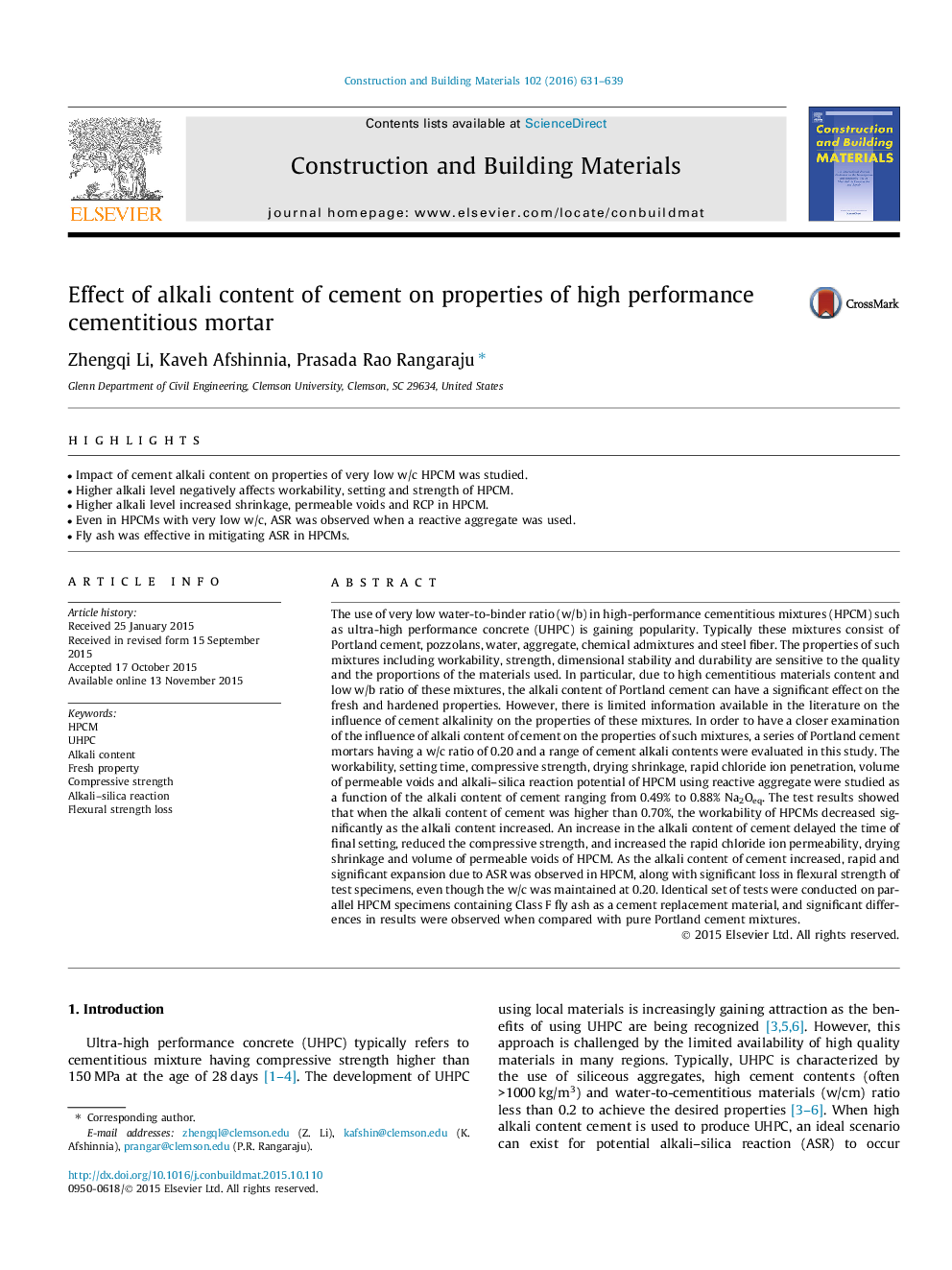| کد مقاله | کد نشریه | سال انتشار | مقاله انگلیسی | نسخه تمام متن |
|---|---|---|---|---|
| 10285082 | 503551 | 2016 | 9 صفحه PDF | دانلود رایگان |
عنوان انگلیسی مقاله ISI
Effect of alkali content of cement on properties of high performance cementitious mortar
ترجمه فارسی عنوان
تأثیر محتوای قلیایی سیمان بر خواص ملات سیمان با کارایی بالا
دانلود مقاله + سفارش ترجمه
دانلود مقاله ISI انگلیسی
رایگان برای ایرانیان
کلمات کلیدی
موضوعات مرتبط
مهندسی و علوم پایه
سایر رشته های مهندسی
مهندسی عمران و سازه
چکیده انگلیسی
The use of very low water-to-binder ratio (w/b) in high-performance cementitious mixtures (HPCM) such as ultra-high performance concrete (UHPC) is gaining popularity. Typically these mixtures consist of Portland cement, pozzolans, water, aggregate, chemical admixtures and steel fiber. The properties of such mixtures including workability, strength, dimensional stability and durability are sensitive to the quality and the proportions of the materials used. In particular, due to high cementitious materials content and low w/b ratio of these mixtures, the alkali content of Portland cement can have a significant effect on the fresh and hardened properties. However, there is limited information available in the literature on the influence of cement alkalinity on the properties of these mixtures. In order to have a closer examination of the influence of alkali content of cement on the properties of such mixtures, a series of Portland cement mortars having a w/c ratio of 0.20 and a range of cement alkali contents were evaluated in this study. The workability, setting time, compressive strength, drying shrinkage, rapid chloride ion penetration, volume of permeable voids and alkali-silica reaction potential of HPCM using reactive aggregate were studied as a function of the alkali content of cement ranging from 0.49% to 0.88% Na2Oeq. The test results showed that when the alkali content of cement was higher than 0.70%, the workability of HPCMs decreased significantly as the alkali content increased. An increase in the alkali content of cement delayed the time of final setting, reduced the compressive strength, and increased the rapid chloride ion permeability, drying shrinkage and volume of permeable voids of HPCM. As the alkali content of cement increased, rapid and significant expansion due to ASR was observed in HPCM, along with significant loss in flexural strength of test specimens, even though the w/c was maintained at 0.20. Identical set of tests were conducted on parallel HPCM specimens containing Class F fly ash as a cement replacement material, and significant differences in results were observed when compared with pure Portland cement mixtures.
ناشر
Database: Elsevier - ScienceDirect (ساینس دایرکت)
Journal: Construction and Building Materials - Volume 102, Part 1, 15 January 2016, Pages 631-639
Journal: Construction and Building Materials - Volume 102, Part 1, 15 January 2016, Pages 631-639
نویسندگان
Zhengqi Li, Kaveh Afshinnia, Prasada Rao Rangaraju,
